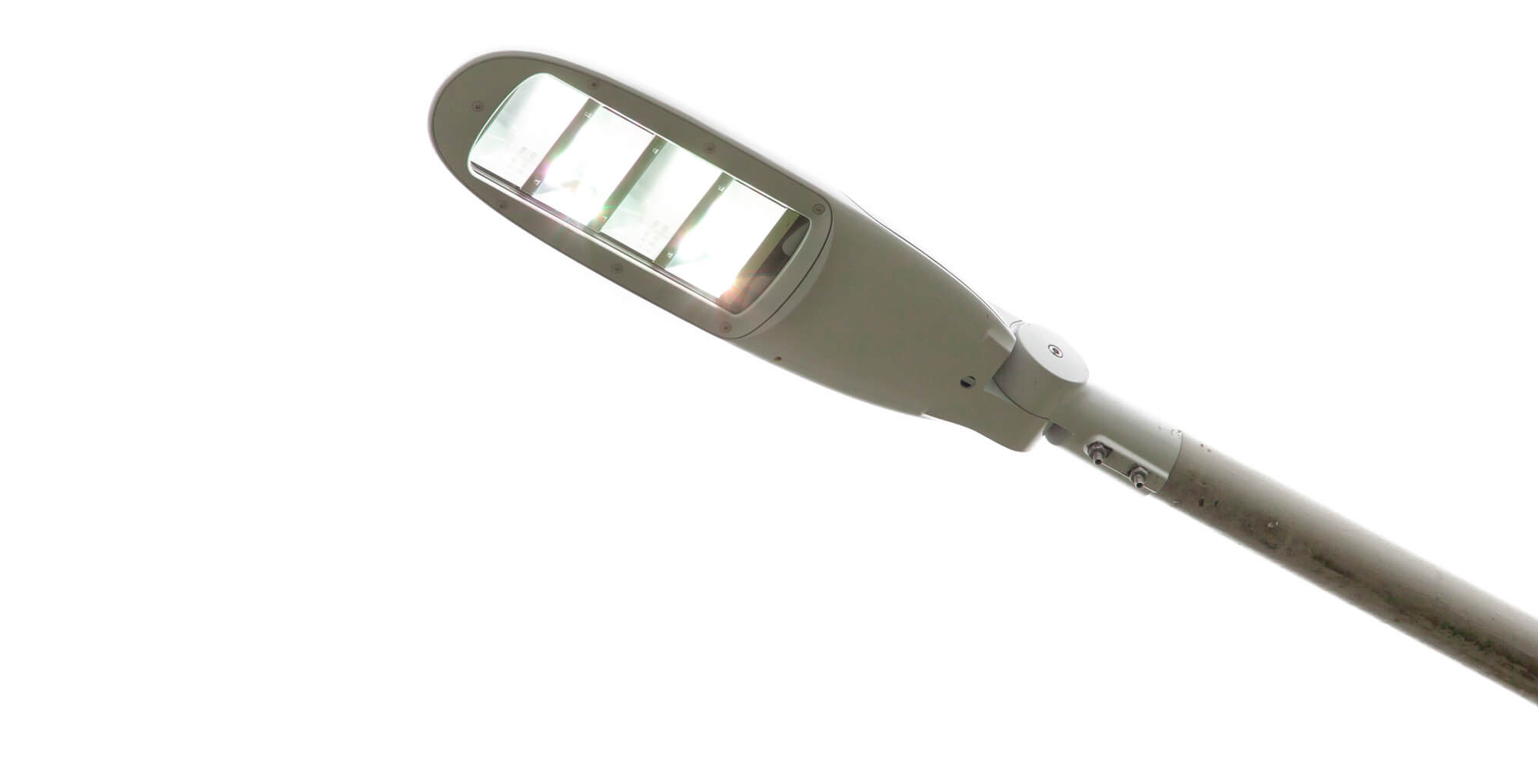11 Aug Ready for an Upgrade? LED Municipal Lighting May Be the Right Fit
There are many different lighting options available for municipalities, from LEDs and fluorescents to HID and incandescent. As advancements continue to be made through new technology, certain lighting solutions are more beneficial. Choosing to upgrade your municipal lighting with LEDs provides users with many benefits, from increased safety and immediate cost-savings to longevity and minimizing your carbon footprint.01
What are LEDs?
An LED, or light-emitting diode, is a form of lighting that consists of two types of semiconducting material. The diode is an electrical semiconductor component composed of two electrodes: anode and cathode. Electricity flows through the two electrodes in one direction, in through the anode and out through the cathode. As power flows through the diode, visible light that we can see is emitted. The diode is usually designed from semi-conductive materials like silicon or selenium, which help stimulate electrical conduction. LED lighting is extremely reliable and effective, which is why it continues to rise in popularity for municipal needs throughout the United States. There are many benefits that LED lighting offers making this lighting design incredibly worthwhile:
- Increased Safety
- Cost-Effective
- Minimizes Carbon Footprint
- Heightened Electrical Efficiency
- Economical Choice
- Longevity
How Your Municipality Will Benefit
There are many different ways municipalities throughout the United States can benefit from transitioning to LED lighting. If you’re in search of a way to upgrade your existing lighting system, LED lighting is a cost-effective, worthwhile transition to make for your location.
Increased Safety
Safety is an essential component when it comes to lighting, as it’s vital that the selected system runs efficiently at all times. LED lighting increases safety for motorists and pedestrians by providing a clearer view of the road. This occurs because LEDs have a higher color rendering index than traditional lighting options. Another aspect of safe lighting is monitoring the amount of heat that is emitted during use. LEDs emit little to no heat when compared to fluorescent or high-intensity discharge lighting. Due to LEDs consuming less power, this lighting solution can effectively operate on low-voltage electrical systems. As modern-day technology continues to advance, LED lighting systems also have the capability to work with sensors to monitor traffic flow, auto-adjust brightness for first responders, and much more.
Economical Choice
LED lighting helps municipalities across the United States gain economic and cost savings because of the lower utility costs and maintenance needs. Modern LED lights have a much lower energy input than traditional street lighting fixtures and have an impressive lifespan that won’t show any degradation in light quality over time. LED lighting fixtures are extremely small, making them versatile and adaptable to numerous lighting application styles from traffic signals and street lamps to intersection and crosswalk lighting.

Minimizes Carbon Footprint
Municipalities across the United States utilize lighting frequently, whether that be to light streets, parking lots, or gathering areas. Finding an environmentally friendly lighting solution is the first step to minimizing your carbon footprint. If you’re unsure of where to start and what changes to make in your municipality, LED lighting is a perfect way as it’s an environmentally sustainable solution. LED lighting lowers energy consumption due to the capability to operate on a low-voltage electrical system and the amount of heat emitted during use. Lower energy consumption translates directly to operating costs, which will be reduced drastically with LED lighting. Many notice the positive impact of LED lighting within months of making the transition.
Heightened Electrical Efficiency
Color Rendering Index (CRI) is a measurement of a light’s ability to reveal the objects’ actual color compared to natural light. LEDs have a higher quality spectrum, a more focused light beam, dimmable functions, and don’t attract as many bugs. Each of these features directly affects electrical efficiency and maintenance costs. Making the transition to LED lighting will benefit your municipality and keep residents, pedestrians, and drivers safe and happy. The impressive electrical efficiency of LED lighting is incredibly noteworthy, as many municipalities can directly benefit from choosing this upgrade.
Cost-Effective
LEDs are incredibly cost-effective due to requiring little to no maintenance, lowering utility costs, and controllable features regarding functioning. Many municipalities find benefits in coupling LED lighting with other electronic communication devices, as this enables the lighting system to efficiently operate on its own with little to no monitoring. Additionally, LED lighting systems can be programmed to auto adapt to the environment meaning the lights will adjust their brightness according to the weather or time of day. This simple function saves municipalities millions of dollars each year throughout the United States because the operating costs are minimized.
Longevity
Municipalities need reliable lighting solutions that will last and function properly for years to come. Compared to traditional lighting solutions, LED lighting offers municipalities an outstanding lifespan, which is worthwhile on its own. While LED lighting is an investment at the start, the maintenance needs are much lower than traditional lighting options, and replacement parts aren’t as expensive since LEDs are continuing to rise in popularity. The average LED lasts 50,000 to 100,000 hours, which is unlike any other lighting option. LEDs last 2 to 4 times longer than most fluorescent, metal halide, and sodium vapor lights and more than 40 times longer than incandescent bulbs.
Enhance Your Lighting Solution Today
Regardless of your municipality’s size, it’s essential to find the most feasible lighting solution for your unique needs. There are many different lighting options available on the market today, and LEDs are only one. It’s recommended to do thorough research on today’s lighting systems as each offers its own benefits. Whether you’re looking to minimize your carbon footprint or save funding for a different project, there is a lighting solution that’s perfect for you, and LEDs might be it.




